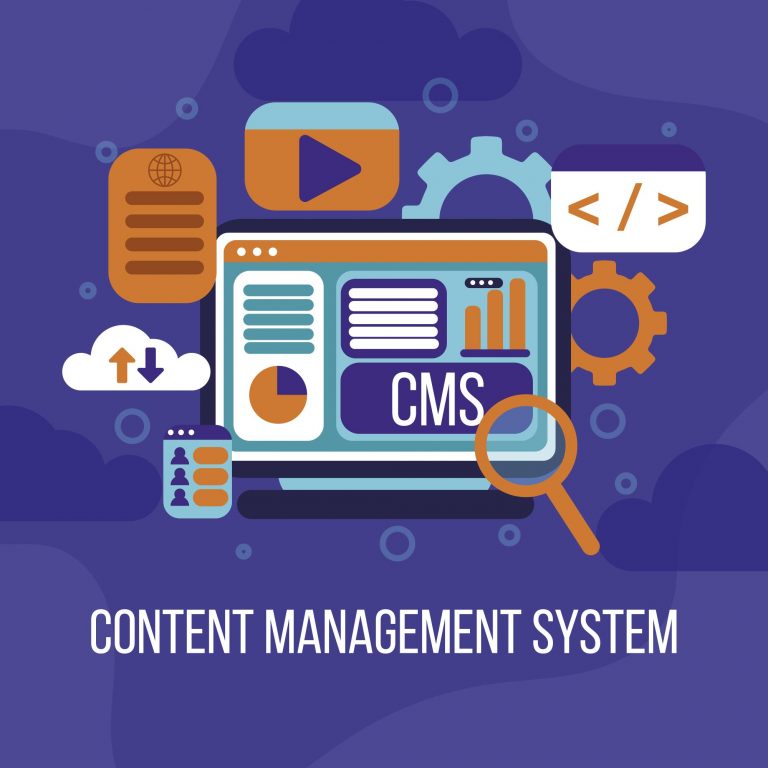You feel that your website has a problem? Too slow? Unwilling to visit? Bugs? You think that you should improve the aesthetics as well as its performance? And you are probably eager to start!
A new site is always perceived positively, as a determining element not only for future visitors and their use, but also in your digital communication.
However, you should never rush into this task and perform an analysis of the existing website beforehand, a step that should not be neglected, especially before a website redesign.
So why is it so important to analyze the existing website and how to proceed to do so? Find our answers in this article.
Why analyze the existing of a website?

In order for a website to become efficient (the goal of a redesign being to improve the whole), it is important to know its strong points and also its weak points, in order to correct them, then to improve them.
It is necessary to take the time to examine the site in its entirety in order to identify the building sites and by prioritizing the actions to be implemented to achieve them. Your analysis should focus on questions such as “What are the elements that make the site unattractive? or “Why is it not easy to find your way around?
There are many aspects to consider in order to be at the top of the search engines: from technical, UX, UI and editorial to popularity, the road to being a reference on the web will be long, but not impossible.
How to do the analysis of the existing website
The key to properly perform the analysis of the existing website is to proceed simply via a checklist of processes to follow.
We have formulated 5 steps to be found below, aimed at helping you to proceed properly.
Do the analysis of the existing
Existing website analysis: Step 1 – Put yourself in the customer’s shoes
A simple idea but one that is very important. The idea is to put yourself in the shoes of a potential customer, to note his feelings, to determine all the blocking points, the obstacles in his path and his browsing experience that prevented or dissuaded him from continuing, spending more time on the site or making a purchase.
For optimal results and a more thorough analysis, we recommend that you have several average visitors complete this step. The survey can also be conducted in the form of a poll.
Note that there are paying platforms specialized in this type of consultation and audit such as Testapic or Ferpection.
Once the data is collected, you will have turnkey elements, collected in a 100% organic way, which will greatly help you in the analysis of your existing website.
Existing website analysis: Step 2 – Analyze the SEO
Being correctly positioned in search engines is essential to your visibility. And if despite the good practices adopted, you are still not getting the traffic you want, you are probably wondering who is getting it? It’s simply your SEO competitors!
That’s where the SEO site audit comes in, a process that includes analyzing site performance, editorial and semantics, technical issues, site popularity, and competitor research to put you on par with or above your competitors.
Analysis of the site speed

Website loading speed is important for visitors, as having a fast site offers a much better experience when browsing.
According to recent studies, if a page takes more than 3 seconds to load, more than a quarter of the users will go to different search results, which will increase the bounce rate, a practice that all good SEOs try to avoid at all costs.
Several free tools are available that can help you monitor the overall speed of your website or the loading speed of each page in order to avoid any technical issues and improve your SEO:
- Google PageSpeed Insights/LightHouse
- Sematext
- Uptrends
- GTmetrix
- Analyze the structure of a website
The structure of a website is also very important for SEO or search engine optimization.
It includes the overall organization of the pages and their respective content. It also involves how you link the various contents on your website and present them to your users.
If you are considering redesigning a website, it becomes essential to focus on analyzing its structure. It is a decisive step to facilitate navigation, increase the time spent on your website, decrease the bounce rate and of course, improve your SEO.
Among the different tools to analyze the structure of a website we find :
- Screaming Frog
- SEMrush
- Ahrefs
Analysis during the redesign of a website, Analyze the path and interactions of a user of a website
This practice also known as UX (User Experience) consists of creating easy to understand, pleasant and engaging interactions between the different contents of your website and its visitors.
There are several elements that can hinder a user’s journey and interaction including confusing layouts, overly pop-up ads, endless banner ads and dissatisfaction with a visitor’s search query.
When these negative factors are encountered, you can easily guess that the company manager did not focus on the user experience when designing his website.
That’s why it’s important to use analytics tools like Google Analytics or Hotjar for example to analyze the UX in order to facilitate navigation, improve SEO and increase traffic.
Analyze the quality of the content

Analyzing the existing of a website requires a thorough analysis of the quality of the content.
This analysis of the quality of the content of a website describes the process of checking everything that is offered in the form of web content such as articles, pages, publications, videos, landing pages etc., and determining their strengths, weaknesses, as well as their performance.
In terms of SEO, a keyword study is necessary, because if the right keywords are not used correctly, it is unlikely that your content will be found on the search engine results.
During this review, it is also important to take stock of the topics you cover, whether or not they meet what your visitors are looking for. Doing this step well will provide you with insights into the performance of your content, gaps to correct (lack of keywords/relevance, plagiarism, bad spelling, typos etc.) and eventually find the most relevant topics for your customers.
The few tools we recommend to help you analyze the quality of the content are Screaming Frog Seo or CopyScape to check for duplicate content.
Analyze internal and external links: meshing and popularity
Internal links, or the process called internal meshing involves linking several pages of a website to each other.
For example, when you write content, you will add a hyperlink to another page, which will create a logical link and provide users with additional information on a specific topic.
As mentioned above, it is important to maintain a high quality user experience so that you can provide a smooth and consistent transition from one page to another. Analyzing the internal linkage is therefore of utmost importance for the needs of the visitors and the reasons why they come to your site.
It is also a way to maintain a low bounce rate, a positive indicator for search engines.
External links on the other hand, also known as “backlinks” are also hyperlinks present in the contents of other sites and which refer to yours.
Just like internal links, backlinks must also be logical, because search engines will not treat them as consistent, which will not improve your SEO.
It is equally important to analyze and obtain quality external links, as this allows Google to consider your content as trustworthy especially if other sites bother to advertise you on theirs.
Among the tools to perform the review of your links, we recommend you to use SemRush or Ahrefs.
Backlinks and netlinking
Existing website analysis: Step 3 – Analyze interfaces and compatibility between each medium
With technology evolving at a rapid pace, every customer on the web these days is looking for a website that can work on desktop browsers as well as on smartphones or tablets.
It goes without saying that in today’s digital age, your website needs a functional design that is compatible on every platform including Netbooks, iPhones, iPads, Kindle readers etc. not to mention that in the next few years, new gadgets and devices will be launched, all with their respective screen sizes and resolutions.
It is precisely in this perspective that it is essential to analyze the interfaces and their compatibility between each support before a redesign to ensure that the process focuses entirely on the environment and the behavior of the user according to the orientation and size of his screen.
Mobile responsive website

Existing website analysis: Step 4 – Analyze the means implemented to achieve the objectives of the site
Defining the most appropriate objectives for your website before a redesign is a crucial first step in your digital marketing campaign.
As with any means implemented for long-term results, it is important to make a detailed analysis and focus on your objectives in order to save time, money and stress.
You can look into integrating a conversion tunnel through a pop-up window, implement an intuitive chatbot, a newsletter or a smart contact form, in short, each existing device must be fully reviewed to be in line with your business goals.
If you want, you can choose “easy” goals and start collecting quick wins, which will save you time for longer term strategies.
Short on ideas? Why not turn to a web marketing consulting agency that will formulate the best strategy after a thorough audit of your existing website.
Existing website analysis: Step 5 – Analyze other websites by comparing them to yours
Competitive analysis is a relatively well known concept especially in the marketing world if you want to know what techniques your competitors are using, their strategies, their referencing formulas or the structure of their site in order to have a visual on what works and what does not.
Analyzing other sites by comparing them to your own is in fact a great way to use your competitors as a source of information to take advantage of the most effective aspects of their strategies and how you can integrate them into your website. Why learn from your mistakes when you can learn from others?
This is indeed a process that not only saves you time, but also resources by building on existing proven work. Of course, you should keep in mind that your competitors are certainly doing the same!





















